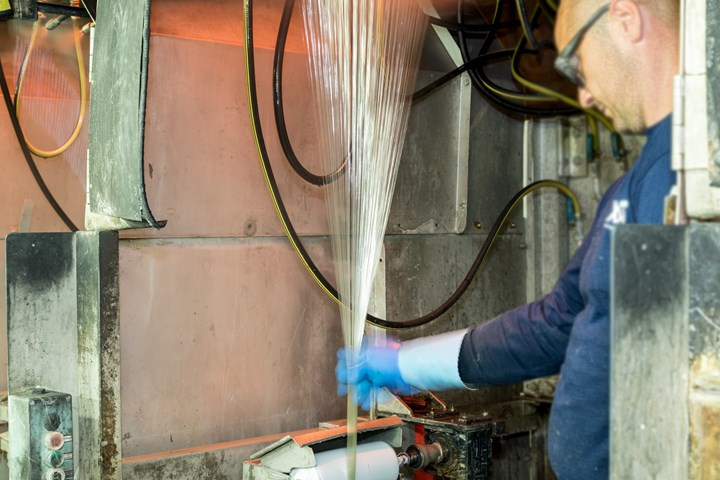Lanxess introduces new water-based dispersions for glass fiber sizing
Expansion of Lanxess’ Trixene Aqua BI product family offers excellent crosslink and adhesion promoters for aqueous coating systems, improves sizing formulation chemical and mechanical resistance.

Photo Credit: Lanxess AG
Specialty chemicals company Lanxess (Cologne, Germany) has expanded its Trixene Aqua range of water-based blocked isocyanate dispersions. The product family now includes new grades, specifically designed to expand application areas and meet more demanding customer needs.
The product lineup includes Trixene Aqua BI 120, an adhesion promoter, and Trixene Aqua BI 522, a coating. However, the product most applicable to composites manufacturing is Trixene Aqua BI 202 sizing technology developed to improve chopped glass fiber strand strength and impact resistance, and impart higher mechanical and flexural properties. Trixene Aqua BI 202 is applicable in combination with Witcobond polyurethane (PU) dispersions.
Generally, Lanxess says its Trixene Aqua products are excellent crosslink and adhesion promoters for aqueous coatings systems. They reportedly boost the chemical and mechanical resistance of coatings and sizing formulations to enable improved performance and durability in the final application. As blocked isocyanates, the dispersions are said to be more stable than their respective free counterparts and can easily be formulated in one-component and two-component systems, together with a variety of complementary aqueous resins, such as hydroxy-functional acrylics, polyesters and urethanes.
Lanxess says its recent studies disclose formulation principles, preliminary selection of appropriate building blocks, ratio and curing conditions. The selection criteria are based upon a preliminary evaluation of the coatings properties, and help the formulator to commence work with Trixene Aqua BI crosslinkers.
Related Content
-
Otto Aviation launches Phantom 3500 business jet with all-composite airframe from Leonardo
Promising 60% less fuel burn and 90% less emissions using SAF, the super-laminar flow design with windowless fuselage will be built using RTM in Florida facility with certification slated for 2030.
-
The potential for thermoplastic composite nacelles
Collins Aerospace draws on global team, decades of experience to demonstrate large, curved AFP and welded structures for the next generation of aircraft.
-
Combining multifunctional thermoplastic composites, additive manufacturing for next-gen airframe structures
The DOMMINIO project combines AFP with 3D printed gyroid cores, embedded SHM sensors and smart materials for induction-driven disassembly of parts at end of life.



